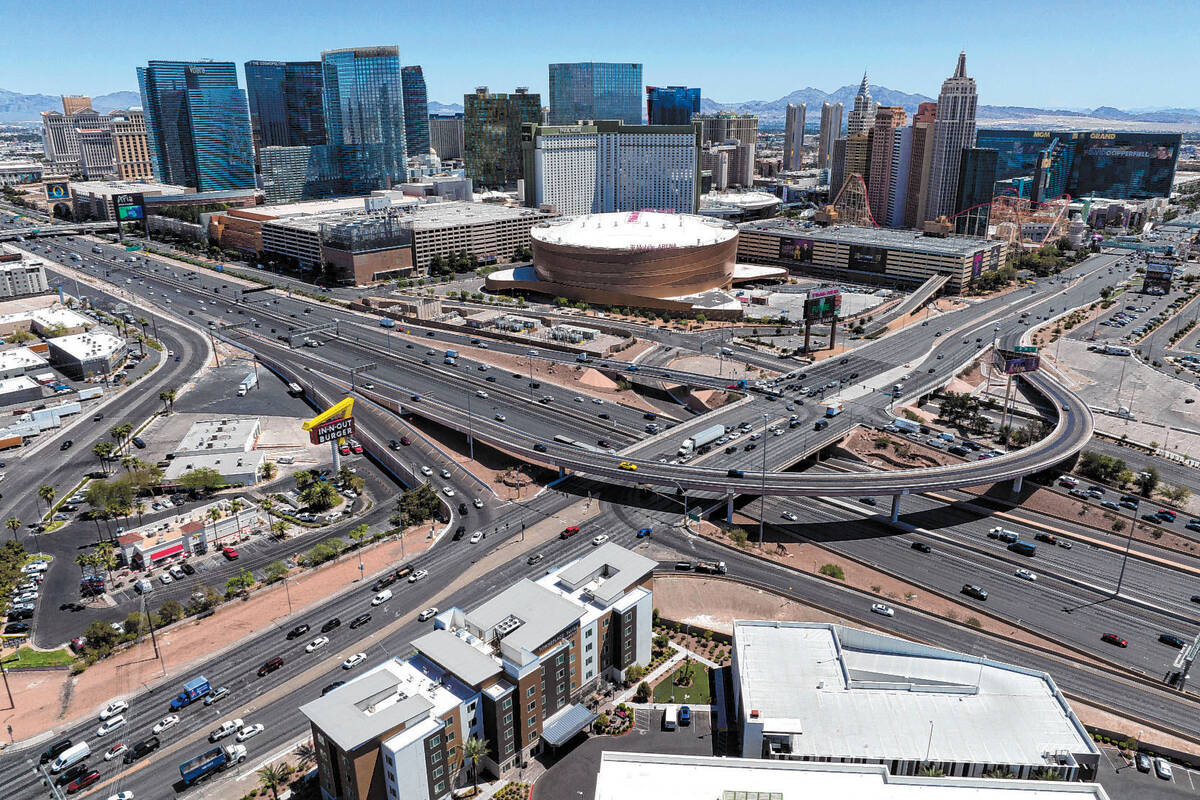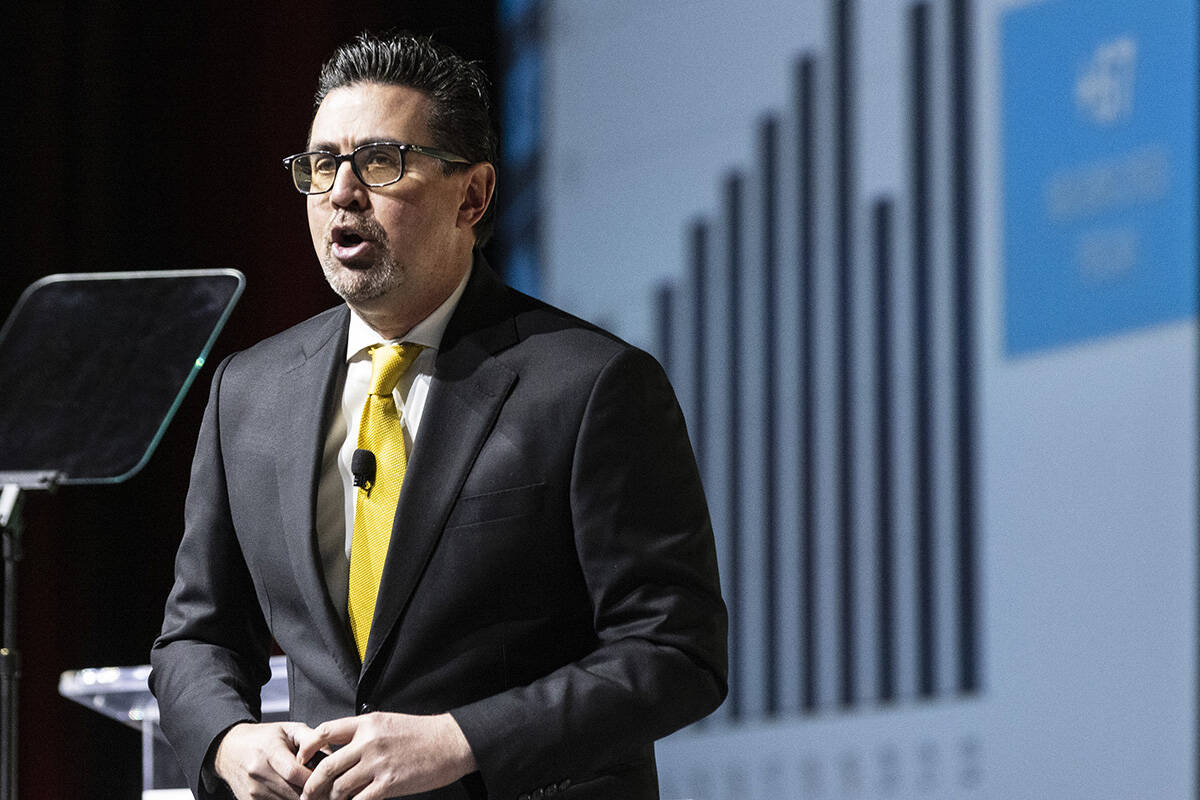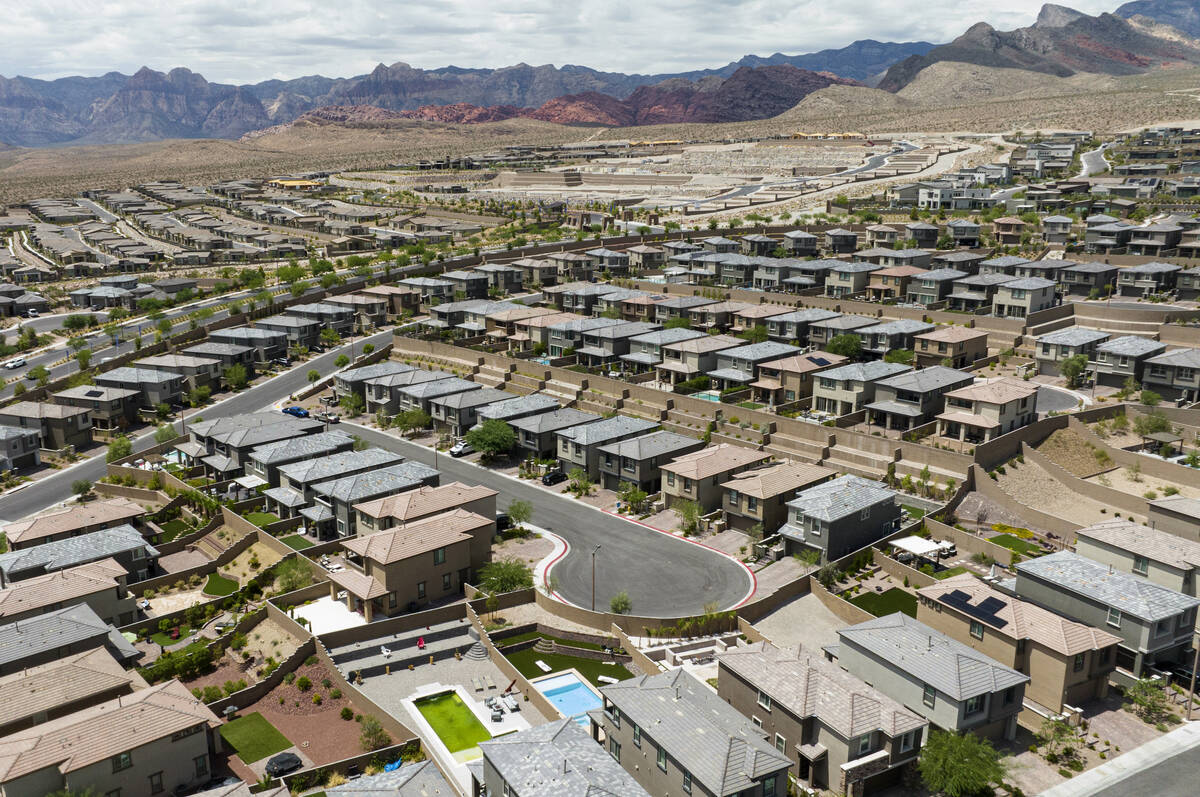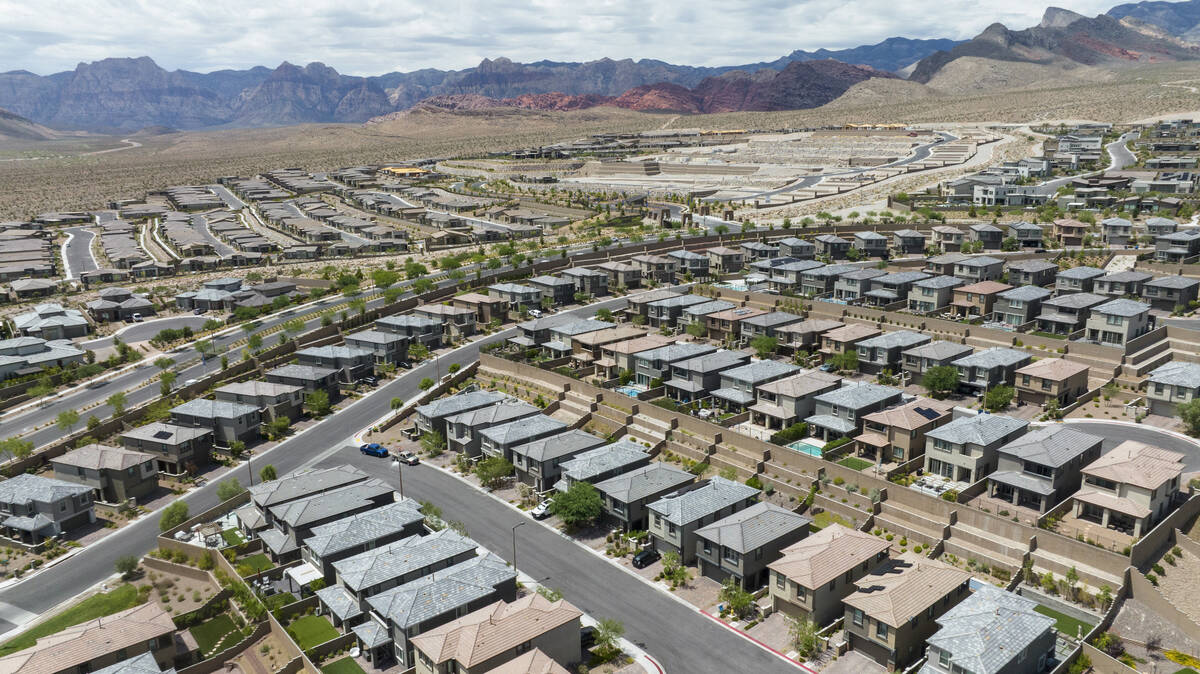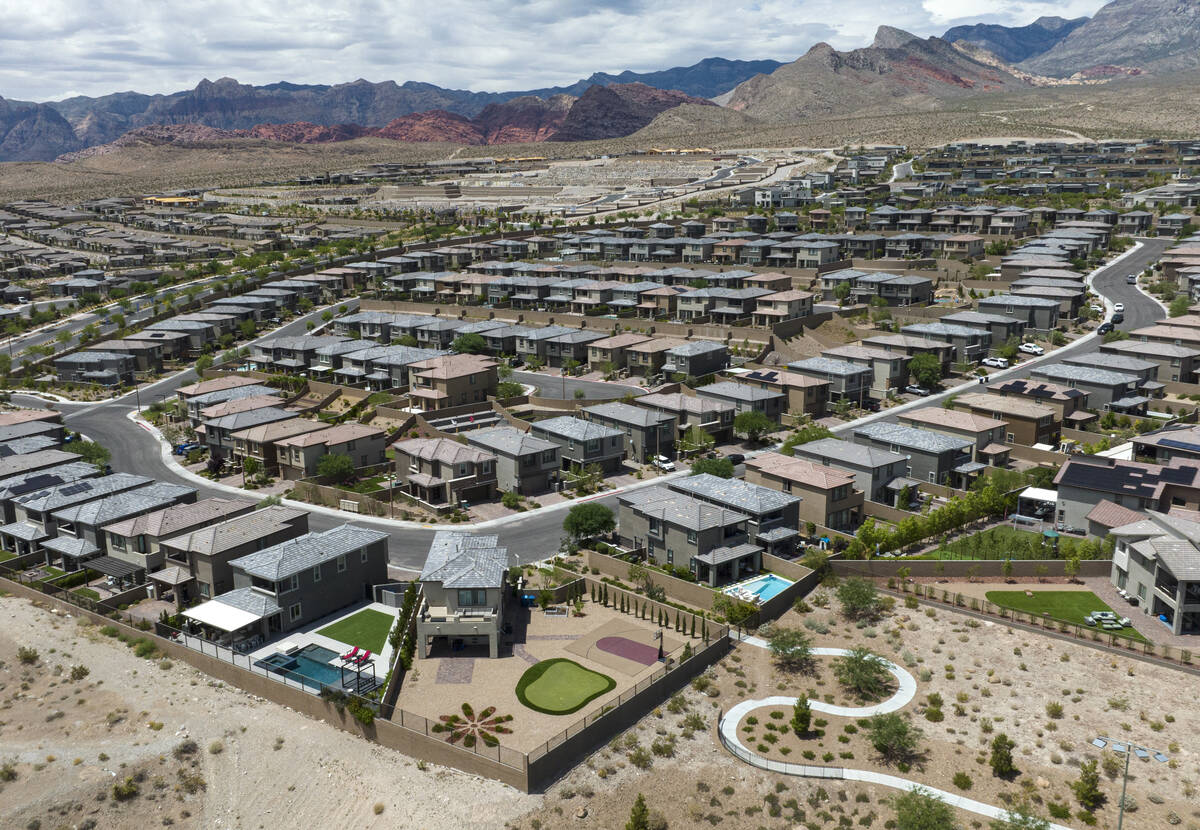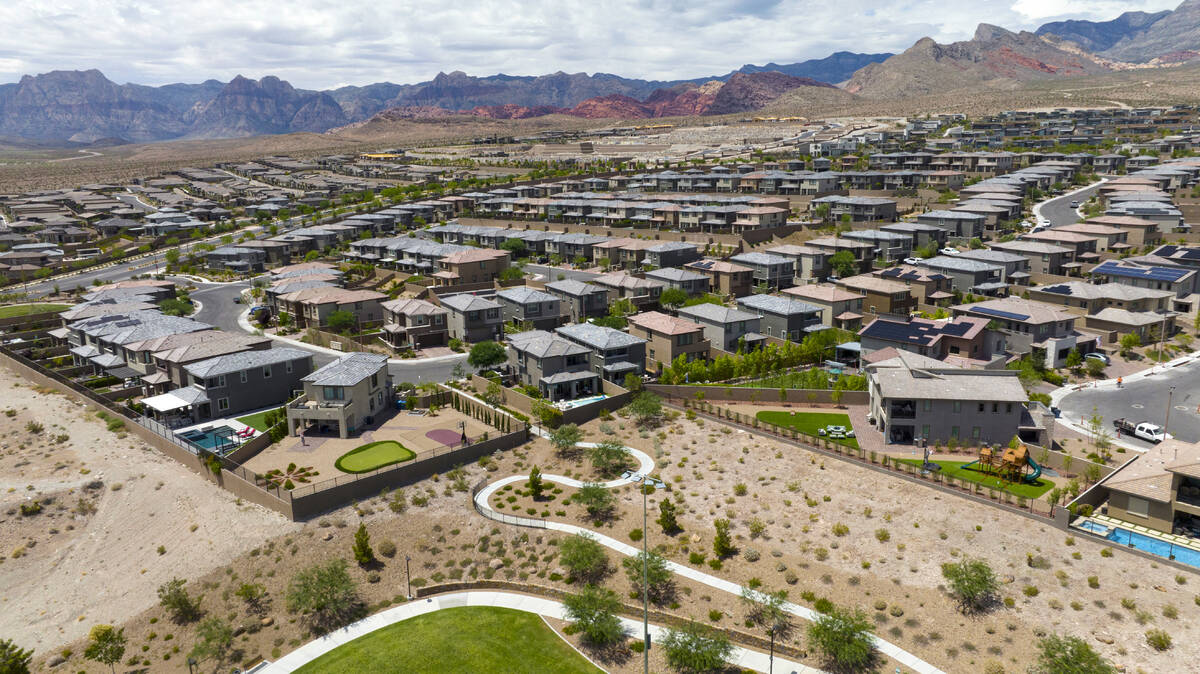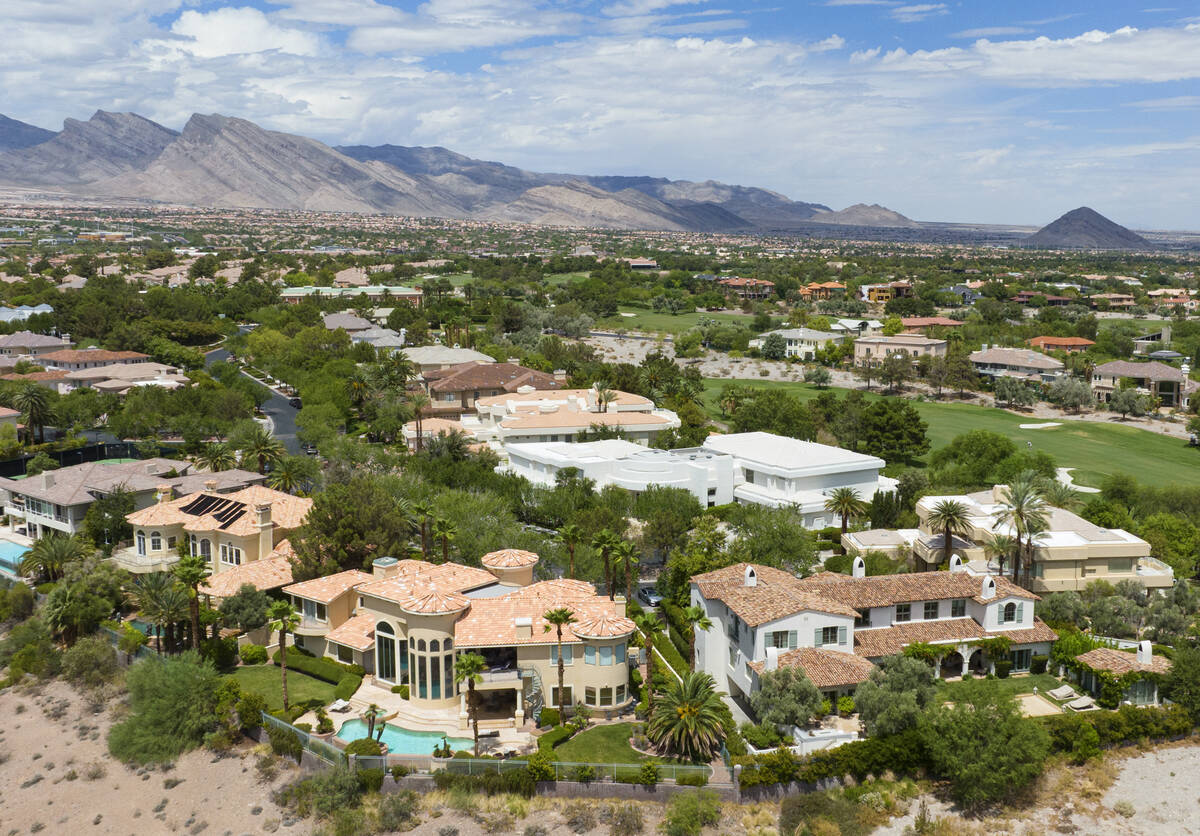California leavin’: How the Golden State influences Nevada’s population
In 1997, Clark County added a staggering 77,336 people to its population, with 38 percent of the newcomers hailing from California.
More than a quarter century later, the same story is playing out, albeit on a slightly smaller scale.
Clark County will likely never see another population boom like 1997, but it has had substantial waves of people moving in since, including significant bumps in 2004, 2009 and finally in 2019, with California migrants consistently driving the growth.
Nevada has always been an enticing place for Californians to relocate — and it’s more than just the geography. The Golden State has made up the majority of new Silver State residents as Clark County’s population has swelled from 2.1 million in 2015 to 2.33 million at the end of 2023. The county is expected to break the 3 million threshold sometime around 2040.
“One of the things that people really like about Nevada is the fact that we don’t have an income tax here,” said Guy Hobbs, managing director of Hobbs Ong & Associates and chief financial officer for Clark County from 1980 to 1995. “And we don’t have an 11 percent income tax like California has, and by original structure, the gaming element was intended to supplant the need for something like an income tax, so the revenue from the gaming tax, which is formidable, goes to the state’s budget.”
Hobbs said tough economic times force people to make big decisions such as moving to another state, and right now Nevada is proving to be a financially viable alternative for Californians — dealing with a high cost of living and housing — during the most recent wave.
Another population boom
New population forecasts from UNLV Lee Business School show Clark County’s current population boom is winding down, as the area added about 50,000 residents in 2020, most of them relocating Californians and remote workers.
But another wave is just around the corner. Forecasts show in 2026, the county will add 56,000 people to its population base, the most in a year since 2016.
Jeremy Aguero, a principal analyst at research and consulting firm Applied Analysis, said the completion of a long-standing, much-delayed major transportation infrastructure project — the Brightline high-speed train and neighboring resort-casino — is playing into the projections.
“A primary motivation for relocation is employment opportunities, so I understand and respect that their working assumption that more jobs will lead to more population,” he said.
Brightline West recently cleared a major hurdle as it was awarded $3 billion in federal funds for its planned $12 billion Las Vegas-to-Los Angeles rail system, expected to start service in 2027. Plans for a $10 billion casino-resort at Las Vegas Boulevard and Blue Diamond Road next to the station are ongoing. That project could be the most expensive development ever built in the city.
The Oak View Group megaproject would feature a 2,000-room resort and a 20,000-seat, NBA-ready arena, and the latest reports are the company hopes to break ground in 2024.
Can Clark County handle another population boom?
Clark County currently adds about 115 residents a day, a number that will climb to 153 by 2026, according to UNLV Business School projections, but experts say more money and homes are needed in a region already dealing with limited water and housing resources to accommodate a greater influx of residents.
“One of the challenges that will always be present is how to pay for the increasing costs,” said Hobbs, who has worked on a number of capital projects related to growth from public transit and water infrastructure to air improvements and flood control. “As noted, existing assets age and need to be replaced — road surfaces, pipes, pumps. As the systems have grown larger, the need to maintain pace with existing system maintenance also grows.”
Hobbs tipped his hat to all levels of government in Nevada for having the wherewithal and foresight to plan ahead and not simply react to population booms over the years.
“Even if population growth begins to slow in percentage terms, in other words, it’s continuing to increase at a decreasing rate. Couple that with the fact that, in certain cases, we are still catching up with past growth and the demands that it has placed upon our infrastructure.”
Aguero said the biggest population booms for Clark County are clearly behind us, however slower rates of growth don’t mean no growth at all, and sustainable growth is the key.
“We’re still growing at somewhere between two and two-and-a-half to three times the national average in terms of population,” he said. “So I think the first question you have to ask is whether the trends relative to the relationship between births and deaths are going to change. And nationally we’re seeing some trends along those lines, which means the population growth (in Clark County) is going to be less.”
Aging population
Census data shows the country, now at 341 million people, hitting a high-water mark in population at 370 million in 2080 before starting a fairly dramatic drop-off. Baby boomers and California migrants will make up the supply of new residents to Clark County in the coming years, said Aguero, noting the influx of older residents does add to the regional health care burden, but also help in terms of money pumped into the economy.
“The increasing number of people retiring is benefiting us, our demographics for retirees in relation to in-migration has been remarkably strong here in Southern Nevada and those retirees are living longer than their parents did, and they are better off than their parents were. And so they are bringing a fair amount of income, and they are a wonderful addition to our community because they have a tendency to spend a lot of money and they don’t take away a job.”
The Nevada Governor’s Office of Economic Development stated in its 2023 Realizing Nevada’s Electric, Innovative and Connected Future report that both “Nevada’s innovation ecosystem benefits from a strong entrepreneurial culture, dynamic economy, low cost of living, and easy access to the fifth largest economy in the world, California” and that “Nevada’s population and labor force is driven largely by in-migration, with many new residents coming from California.”
Bob Potts, deputy director at the Nevada Governor’s Office of Economic Development, said properly replenishing Nevada’s population as the entire country ages is the biggest question we have to ask ourselves moving forward into a new economic age of technology.
“What type of workforce are you trying to attract? Whether they come from Massachusetts or California or Kansas, what type of community do you want to be when you grow up, both at the local level, and state and regional level? And it’s all about making the right thing easy and the wrong thing difficult.”
Contact Patrick Blennerhassett at pblennerhassett@reviewjournal.com.



